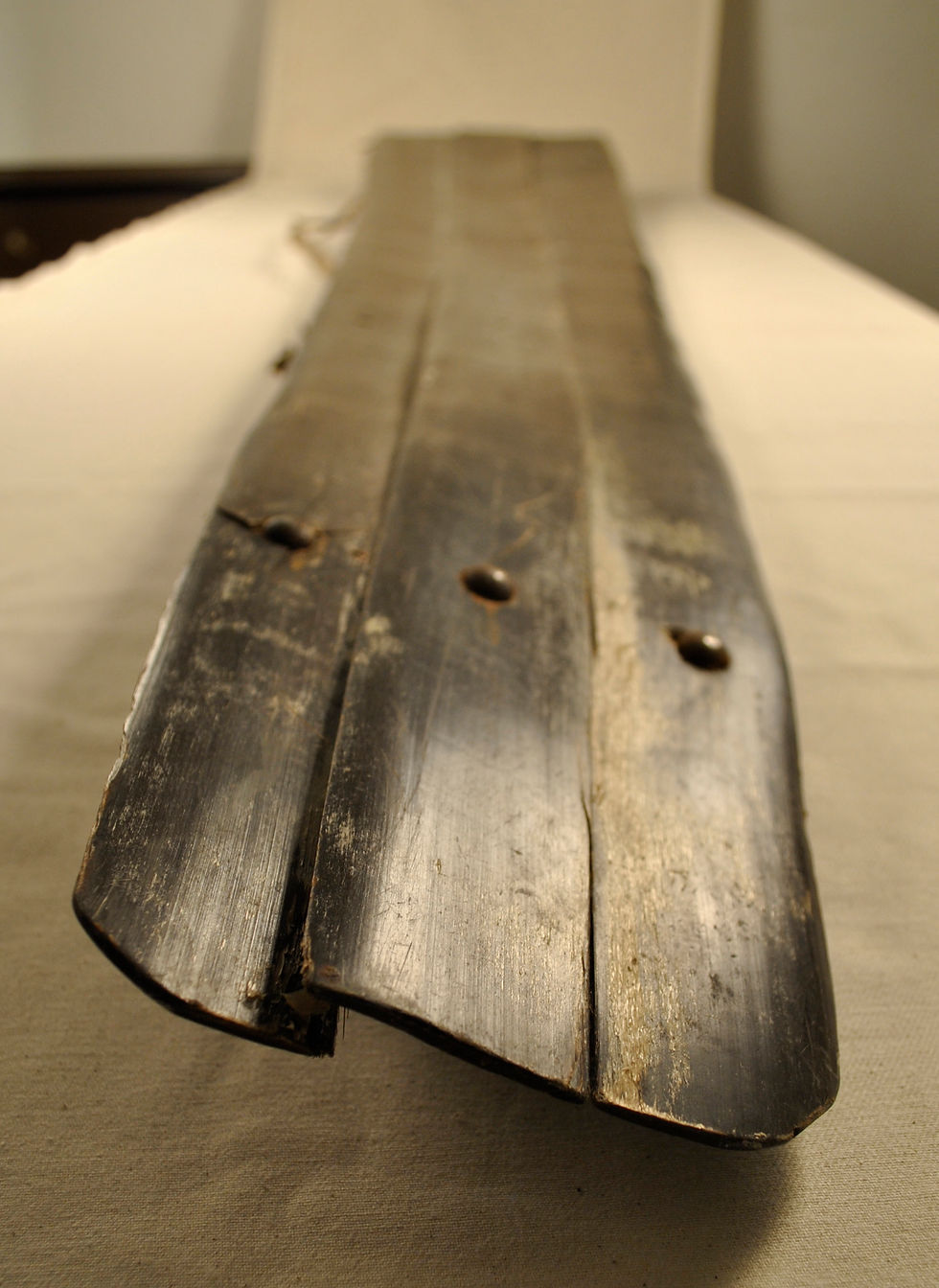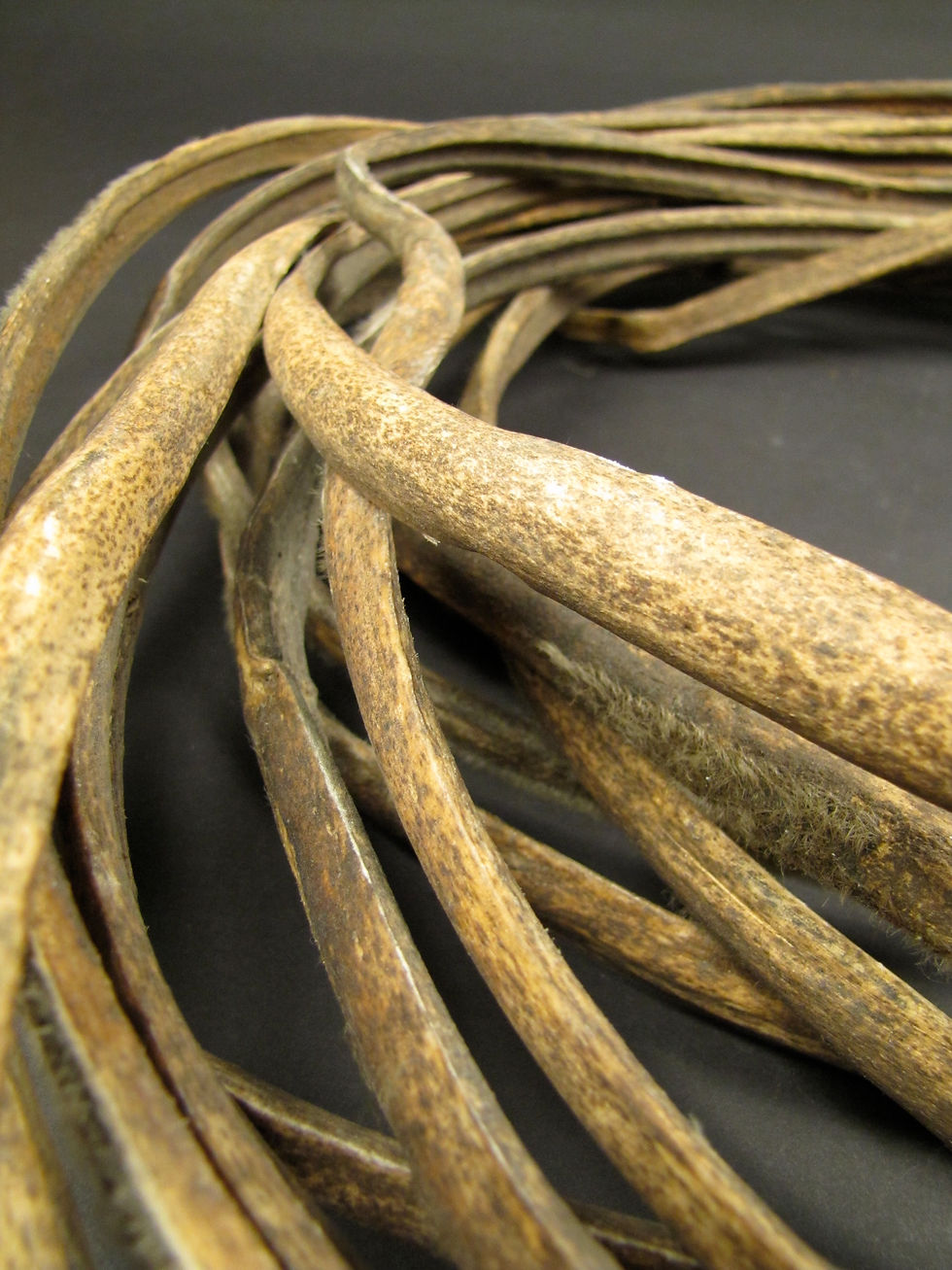The Jim and Vanita Oelschlager
Native American Ethnographic Collection

Baleen Sled, ca. 1920 Alaska Territory. Whale Baleen, Wood, Hide. 80” x 15.2”

Baleen Sled, ca. 1920 Alaska Territory. Whale Baleen, Wood, Hide. 80” x 15.2”

Baleen Sled, ca. 1920 Alaska Territory. Whale Baleen, Wood, Hide. 80” x 15.2”

Baleen Sled, ca. 1920 Alaska Territory. Whale Baleen, Wood, Hide. 80” x 15.2”

Baleen Sled, ca. 1920 Alaska Territory. Whale Baleen, Wood, Hide. 80” x 15.2”

Baleen Sled, ca. 1920 Alaska Territory. Whale Baleen, Wood, Hide. 80” x 15.2”

Sealing Line, ca. 1880 Alaska Territory. Seal Hide. 14” x 12.9” x 4.7”

Sealing Line, ca. 1880 Alaska Territory. Seal Hide. 22.2” x 17.2” x 4.3”

Sealing Line, ca. 1880 Alaska Territory. Seal Hide. 22.2” x 17.2” x 4.3”
This sled is made from baleen that comes from the mouth of a baleen whale. In the whale the baleen is part of a filtration system by which they feed. Instead of teeth, the baleen whales have plates with course bristles to filter food from the water. The bristles, or whalebone hair, are anchored on the baleen plates.
Depending on the species of whale, (bowhead and gray whales are two of the species), the baleen plates can be as large as eleven feet long and weight up to two hundred pounds. The plate is tough and resilient and has traditionally been used for sleds and other artic tools. Baleen sleds were important traditional tools for hauling material over ice and snow.
By the1800s baleen was used nationally in the commercial manufacture of women’s corsets, collar stiffeners, buggy whips and parasol ribs. The whalebone hair was used for hairbrushes and chimney brushes.